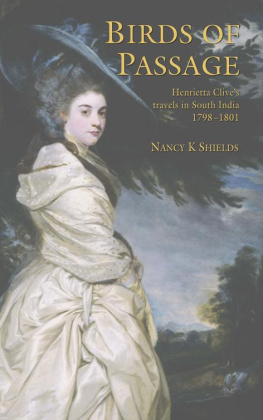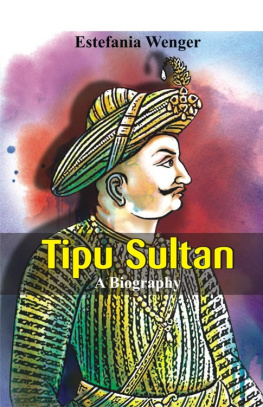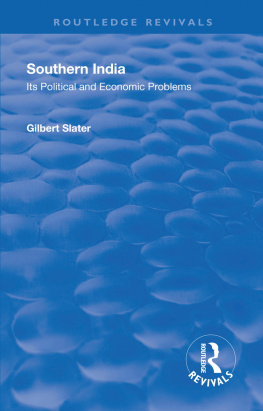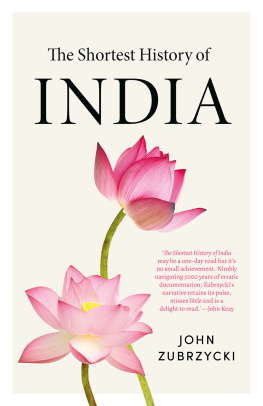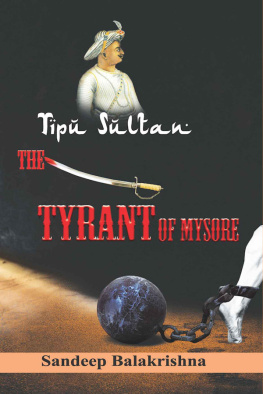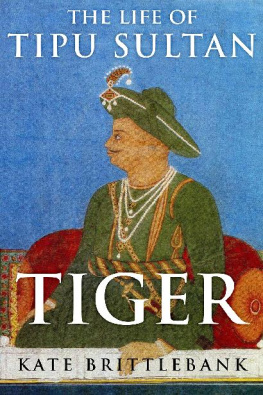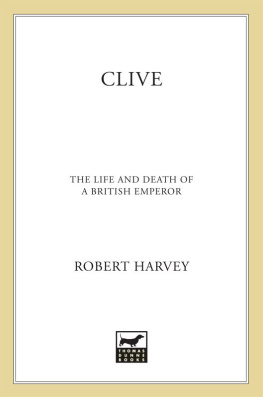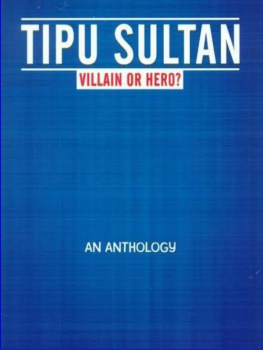Birds of Passage is not a long book, but it has been a long time en route. Easily tempted, as Ive been wont to be, Ive meandered down other roads in other countries (Tibet, the Gobi Desert, Bolivia) pursuing other projects, travelling elsewhere as the opportunity has arisen. Henrietta might well have wished for a speedier resolution to our journey. Be that as it may, we have arrived and here she is. Along our way, I have benefited from the help and advice of many people.
In particular, I am grateful to the Seventh Earl of Powis [George William Herbert, 19251993] who gave me access to Henriettas India papers while they were still at home at Marrington Hall, Chirbury.
My profound thanks go to Pat Kattenhorn, Prints Room Librarian in the old India Office Library, for surprising me with Lady Charlotte Florentia Clives journal, an extraordinary document with watercolours, presumably copies after those of Anna Tonelli.
I want to acknowledge my gratitude to Mr Peter Rosselli who so generously responded to my request to publish passages, pen and ink sketches and watercolours from Lady Charlotte Florentia Clives journal.
I am indebted to R. Guy Powell for his gracious help in answering my questions about the descent of Lady Charlotte Florentia Clives journal as well as providing information about the family background of Signora Anna Tonelli.
To Anne Buddle, Registrar, Victoria & Albert Museum, I offer my grateful thanks for the exhibit Tigers Round the Throne: the Court of Tipu Sultan (17501799), Zamana Gallery London, 1990, an experience that enriched my interest in Henrietta while expanding my knowledge about Tipu Sultans world.
I want to express my appreciation to the British Library whose librarians have assisted me in many ways over the years. In particular, I thank Jean Wooler and Chris Lee.
At the National Library of Wales, where Henriettas papers now reside, I wish to thank Glyn Parry, Head of Archival Data Section, for his kind help.
Many thanks to the National Trust Powis Castle curators, Emma Marshall and Margaret Gray, who gave me the opportunity to see the original watercolours painted by Signora Anna Tonelli during her 1800 journey in India. And thanks to Rafela Fitzhugh for information concerning the descent of the Tonelli watercolours to her family.
Thanks go as well to Professor Kathy Holcomb, who helped me learn how to decipher Henriettas sometimes difficult-to-read eighteenth-century handwriting.
I want to thank my brother, John, at whose suggestion I went to Welshpool to see the Clive exhibition at Powis Castle in the first place, and my niece, Nancy, who at age seven, accompanied me to Aberystwyth from West Texas. Deemed too young to sit in the National Library of Wales reading room, she sat and read her books in the hallway while I got on with my endeavours. I am, as well, gratified by my nephew Will Toms continuous support of whatever I might be involved with.
Special thanks go to Dr Ravi Kapur of the National Institute of Advanced Studies, Bangalore, and Dr Mala Kapur of the National Institute of Mental Health, Bangalore, for their kind hospitality and friendship.
My particular thanks to Doris Lessing, with whom I have shared many conversations on many topics, including Henrietta, and who generously let me use her downstairs flat on numerous occasions over the years.
I am grateful to Jane Slattery, stage designer, who has provided me with a London couch to sleep on as the need arose, and who continually enquired about Henrietta.
Mention must be made of two free spirits who have figured prominently in my life: Richard Cahill (19241998), seafaring captain, and Dr Milton Miller (19272005). Each truly believed that one day I would publish Henriettas journey as part of my own travels.
I am beholden to Jacqueline Bowker, friend of many years, who urged me on, saying, Try Eland for a publisher.
I am much obliged to Calvin McGowan, rancher, who, concerned at how long Henrietta has been collecting dust, enthusiastically encouraged me to apply a cowboy axiom and, Move her out.
My deepest gratitude goes to another long-time friend, Charles Stewart Robertson, gentleman scholar, eighteenth-century specialist and retired Professor of Philosophy at the University of New Brunswick, Saint John, who has affectionately challenged me with his continuing and generous enthusiasm for Henrietta.
And finally, special thanks go to Barnaby Rogerson, whose free spirit was willing to accept this rather curious travel book at Eland, and Rose Baring, whose meticulous concern with the manuscript has polished it.
And now, I give you, Henrietta, alone but strong on her own feet.
All the words in the glossary are italicised in the text:
| bandy | a small cart |
| begum | a lady |
| betel | the leaf of the piper betel that is chewed with arecanut and chunam staining the lips and teeth red |
| Brahmin | a member of the Hindu priestly caste |
| bubris | stylised tiger stripe pattern that decorated many of Tipu Sultans possessions |
| caffers | black tribes of south Africa |
| chintz | printed, painted and dyed cotton |
| chita | a cheetah used for hunting |
| choultry | halls used for public business or by travellers as a resting place |
| chunam | a polished lime plaster made from seashells |
| darbish muslin | thin semi-transparent fabric |
| diwan (dewan) | prime minister or the vizier in charge of administrative finances |
| doolies (dhoolies) | covered litter |
| dragoon | armed cavalryman |
| droog | fort |
| dubash (dobashe) | interpreter |
| durbar | audience hall |
| dussera | a nine-night or ten-day festival in October at the close of the wet season |
| fakeer (faker, fakir) | Muslim ascetic |
| ghauts | the mountain ranges parallel to the Eastern and Western coasts that lead from the table lands above to the coasts below |
| havildar | a Sepoy non-commissioned officer, corresponding to a sergeant |
| howdah | a framed seat usually with no canopy carried by an elephant; sometimes made of silver |
| imam (iman) | the prayer leader of a mosque |
| jamadar | native footman, head of the running footmen |
| kincob | gold brocade |
| knaut | an enclosure used by a prince to surround an encampment of wives |
| lascar | a sailor |
| looties | plunderers |
| lunghi | a type of sarong worn by men |
| Maharajah (Rajah) | King |
| Mahratta | a famous Hindu warrior class |
| masoollah | the surf boat of capacious size, formed of planks lashed together with coir-twine and used on the Coromandel Coast |
| munshi | private secretary or language teacher |
| musnud (masnad) | the cushions and bolsters that make up the throne of an Indian ruler |
| Musulman | Muslim |
| nabob | English corruption of the Hindustani nawab, in England a term of derision |
| nautch | a traditional Indian dance performed by women |
| nawab | Muslim title of rank |
| nayres (nahir) | a military caste of the Malabar coast |

